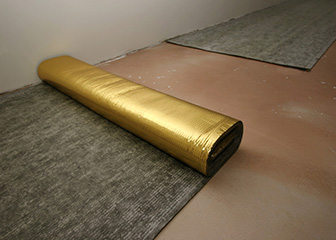Summary

| Quick Facts: Carpet Installers | |
|---|---|
|
$36,090 per year
$17.35 per hour |
|
| Less than high school | |
| None | |
| Short-term on-the-job training | |
| 47,500 | |
| 10% (About as fast as average) | |
| 4,900 | |
What Carpet Installers Do
Carpet installers lay carpet in homes, offices, restaurants, and many other types of buildings.
Work Environment
Carpet installers spend a lot of time bending and kneeling. Although their work is not as dangerous as that of some other construction trades, carpet installers still experience a high rate of injuries and illnesses.
How to Become a Carpet Installer
The vast majority of carpet installers learn their trade on the job.
Pay
The median annual wage of carpet installers was $36,090 in May 2010.
Job Outlook
Employment of carpet installers is projected to grow 10 percent from 2010 to 2020, about as fast as the average for all occupations. Job prospects should improve in the coming decade as construction activity rebounds from the recent recession.
Similar Occupations
Compare the job duties, education, job growth, and pay of carpet installers with similar occupations.
O*NET
O*NET provides comprehensive information on key characteristics of workers and occupations.
Contacts for More Information
Learn more about carpet installers by contacting these additional resources.









